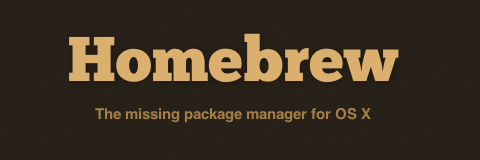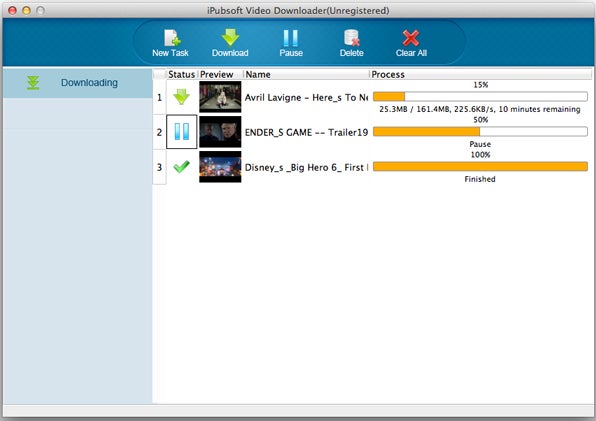How To Download Apt Get For Mac

- How To Download Apt Get For Mac Free
- How To Download Apt Get For Mac Windows 10
- How To Download Apt Get For Mac Download
Getting started provides an overview of Docker Desktop on Mac, basic Docker command examples, how to get help or give feedback, and links to other topics about Docker Desktop on Mac. Troubleshooting describes common problems, workarounds, how to run and submit diagnostics, and submit issues. FAQs provide answers to frequently asked questions. The apt-get command and the sudo command does not work for me. Which apt-get returns nothing. I checked by bin folder to make sure, and there is no aptget. I however have wget. Can I install apt-ge.
I want to download a package and all of its dependencies that I would typically use apt-get to install on Ubuntu. How do I download a package and its dependencies locally on Ubuntu? I am using Ubuntu 14.04 and Ubuntu 16.04 for this tutorial.
How to Download Ubuntu Packages and Dependencies Locally
We require Internet access to download the packages locally. First, we should always update our package sources.
Afterwards, we should make a directory to store the packages that we want to download.
Now, we download the package inside that directory. For instance, let’s say that we wanted to download vim and not install it. Where vim is, you can replace with the name of any package available through apt-get.
Any errors will be outputted inside no32.txt. If you ls, then you should see all of the deb packages and dependencies.
How to Install .deb Files
Errors are processed in no32.txt.
Updated by LinodeWritten by Linode
Report an Issue View File Edit File
Introduction to Git
Git was designed and developed by Linus Torvalds for Linux kernel development. Git provides support for non-linear, distributed development, allowing multiple contributors to work on a project simultaneously. Git is the most popular distributed version control and source code management system.
This guide explains how to install the latest, stable, prepackaged version git on GNU/Linux, Mac Osx, and Windows, using their respective package managers. Git can also be compiled from source and installed on any operating system.
For more information about using and configuring Git, see our Getting Started with Git guide.
Notesudo wherever possible. Complete the sections of our Securing Your Server to create a standard user account.Install Git
Debian and Ubuntu:
CentOS:
Fedora:
Arch Linux:
Gentoo:
There are different ways to install Git on Mac OS. You can install Git using Homebrew, MacPorts, or by downloading the Git installer package.
Install Git via Homebrew
If Homebrew is already installed, begin with Step 6.
- Go to the Homebrew website.
Copy and paste the command on that page, under Install Homebrew into a terminal window:
At the next prompt enter your password and hit Return:
You will receive an installation successful message when complete:
To help diagnose Homebrew errors, install Brew Doctor before installing Git:
Update Homebrew:
Install Git:
Install Git via MacPorts
If MacPorts is already installed, proceed directly to Step 9.
- Go to MacPorts website.
- Click on the link for your operating system.
- After the download completes, click on the file to start the installer.
Click the Continue button to begin the install:
Click Continue and then Agree to accept the license agreement:
Click Continue to continue the installation:
To leave the default installation location click Install, or to change the default installation location, click Change Install Location:
Enter your password when prompted and click Install Software:
After the installation completes, click Close to exit the installer:
Open a terminal window.
Install Git:
How To Download Apt Get For Mac Free
Install Git via Package Installer
- Go to the Git website and download the current installer for your operating system.
- Double click on the downloaded file to begin the install.
Double click the
.pkgfile. A dialog window may appear stating that the file cannot be opened:Click on the Apple icon in the top left of the screen, and go to System Preferences > Security & Privacy. Click Open Anyway:
Click on Open:
Click Continue button to begin the install:
To leave the default installation location click Install, or to change the default installation location, click Change Install Location:
Enter your password when prompted, and then select Install Software:
After the installation completes, click Close to exit the installer:
To install Git on Windows you will need to download the installer from the Git website:
Download the most current version for your operating system by double clicking on the package name:
Select Run to begin the installation:
Click Yes to continue:
Click Next to continue:
If you need to change the installation folder, click Browse and select a new location. To accept the default location click on Next:
 Facebook video download free download - Adobe Presenter Video Express, YTD Video Downloader, Facebook Exporter for iPhoto, and many more programs. Video Software MP3 & Audio Software. Facebook Video Downloader by Facebook Video Downloader Team is a Chrome browser extension that gives you the possibility to easily download videos from Facebook. While there is no version of Facebook Video Downloader for Mac, you can try and download similar applications that could help you save your favorite Facebook videos. Free facebook video downloader free download - YTD Video Downloader, Total Video Downloader, Mac Video Downloader, and many more programs. Best 9 Tools to Download Facebook Videos on Windows, Mac, iPhone, Android No doubt YouTube is the most popular video hosting ever. There are tons of educational how-to guides, funny animal videos, music clips, kids’ videos, movies, TV series and other stuff for any taste.
Facebook video download free download - Adobe Presenter Video Express, YTD Video Downloader, Facebook Exporter for iPhoto, and many more programs. Video Software MP3 & Audio Software. Facebook Video Downloader by Facebook Video Downloader Team is a Chrome browser extension that gives you the possibility to easily download videos from Facebook. While there is no version of Facebook Video Downloader for Mac, you can try and download similar applications that could help you save your favorite Facebook videos. Free facebook video downloader free download - YTD Video Downloader, Total Video Downloader, Mac Video Downloader, and many more programs. Best 9 Tools to Download Facebook Videos on Windows, Mac, iPhone, Android No doubt YouTube is the most popular video hosting ever. There are tons of educational how-to guides, funny animal videos, music clips, kids’ videos, movies, TV series and other stuff for any taste.To accept the default components to be installed click Next. Otherwise, select the additional components to be installed before clicking the Next button:
Accept the default Start Menu folder by clicking Next, or use Browse to select a new folder location:
Select the default text editor for Git, then click Next:
Adjust your PATH environment, then click Next:
Choose which SSL/TLS library you’ll use for HTTPS. Then, click Next:
Keep the default line ending conversion by clicking Next. To change the default, choose one of the two other choices before clicking Next:
Note
It is strongly recommended that you keep the default settings for line ending conversions. Changing from the default may result in formatting problems when viewed on your Linode.Choose the terminal emulator you’ll use, and then click Next:
Configure the extra options, and then click Next:
Check Launch Git Bash and complete the setup by selecting Finish:
You can launch the Git GUI from the bash shell. Type
git guiat the command line and hit enter:Once you open Git you can select either Create New, Clone Existing or Open Existing Repository. In this example, we create new repository. Enter a directory name or click on Browse to navigate to a directory:
A blank repository is created:
Get Started with Git
Visit our guide on Git configuration for helpful commands to get you started with Git and repositories.
How To Download Apt Get For Mac Windows 10
More Information
How To Download Apt Get For Mac Download
You may wish to consult the following resources for additional information on this topic. While these are provided in the hope that they will be useful, please note that we cannot vouch for the accuracy or timeliness of externally hosted materials.
Join our Community
This guide is published under a CC BY-ND 4.0 license.